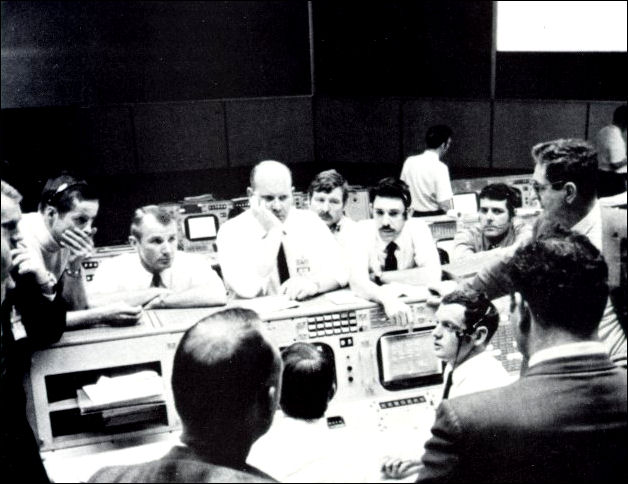
|
| In Mission Control the Gold Team, directed by Gerald Griffin (seated, back of head to camera), prepares to take over from Black Team (Glynn Lunney, seated, in profile) during a critical period. Seven men with elbows on console are Deke Slayton, Joe Kerwin (Black CapCom), Vance Brand (Gold CapCom), Phil Shaffer (Gold FIDO), John Llewellyn (Black RETRO), Charles Deiterich (Gold RETRO), and Lawrence Canin (Black GNC). Standing at right is Chester Lee, Mission Director from NASA's Washington headquarters, and broud back at right belogs to Rocco Petrone, Apollo Program Director. Apollo 13 had two other "ground" teams, the White and the Maroon. All devised heroic measures to save the mission from disaster. |


